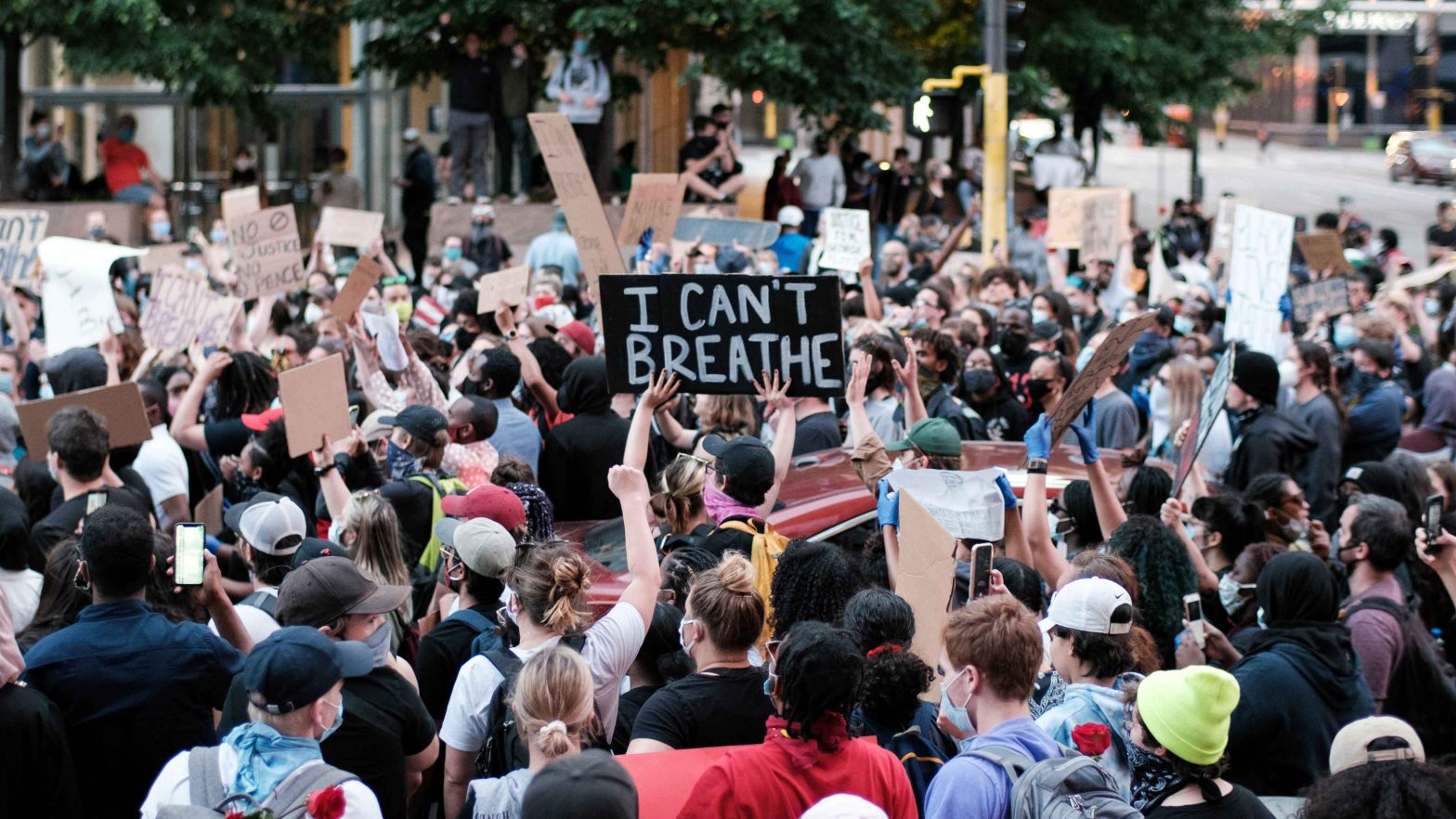In less than a year, the United States has witnessed two of the largest protest movements in its history—the ongoing Black Lives Matter demonstrations and the Global Climate Strike of September 2019.
At first glance, the two may not seem related, yet they are. Both movements are fighting for large-scale systemic change by staging nonviolent protests.
But there’s another connection between the fight for racial justice and the fight for climate justice—a new social theory known as ecological justice. It shows how anti-racism and climate change mitigation can work hand-in-hand within communities. The pairing is absolutely necessary: Black people and other people of color are disproportionately affected by the negative effects of climate change.
There is ample evidence for these disproportionate effects. Both Black and Latinx populations in the U.S. are exposed to more harmful air pollutants than they produce, while the trend is the opposite in predominantly White communities. Further, severe weather events, which have occurred in increasing numbers in recent years, tend to hit impoverished communities of color the hardest.
Eliminating the root cause of climate change—the burning of fossil fuels—addresses two sources of inequity, severe weather and toxic air and water pollution. But creating enduring solutions will require systemic and institutional changes beyond simply addressing climate change in isolation.
You don’t have to look far to find examples of the disproportionate effectsof climate change on communities of color. Hurricane Katrina is among the clearest. In 2018 there were 92,245 fewer Black people living in New Orleans than in 2000. Today, 15 years after the storm, majority Black areas in the city remain in disrepair. Median Black household income was 20% lower in 2013 than it was in 2000, while median White household income was about 7% higher.
Three years later, a lesser known story played out in Uniontown, Alabama, a city in Perry County about 20 miles west of Selma. The community is 88 percent Black, with most citizens living below the poverty line.
That story began in 2008 when a dam burst at a coal ash pond at a power plant near Kingston, Tennessee, spilling millions of gallons of toxic slurry over a wide area. The power plant’s owner, the Tennessee Valley Authority, hired a company to clean up the hazardous spill. In 2010, workers for the company transported four million cubic yards of toxic coal ash—enough to cover 188 football fields with 10 feet of waste—over 300 miles from Kingston to Uniontown’s Arrowhead landfill.
With the ash came a raft of toxic chemicals including arsenic, boron, lead, and mercury. Local residents documented the disaster, and in 2016, the U.S. Commission on Civil Rights, a bipartisan government agency, published a report criticizing the Environmental Protection Agency’s handling of the disposal.
The choice to ship the coal ash to the Arrowhead Landfill didn’t simply represent failure to enforce environmental protection standards, but also a failure to uphold civil rights, according to the American Bar Association. Residents of Uniontown organized and began filing complaints against the Alabama Department of Environmental Management, first for renewing the Arrowhead Landfill’s operating permit and later for expanding its footprint. Since the state department receives funding from the EPA, both decisions, the residents said, ran afoul of Title VI of the Civil Rights Act of 1964—which says that federal funding for programs may not discriminate. After a 2013 complaint, the EPA’s Office of Civil Rights, now known as the External Civil Rights Compliance Office, began an investigation only to dismiss it in 2018.
The fallout of the Kingston coal ash disposal and Hurricane Katrina are connected to the burning of fossil fuels, and both took a disproportionate toll on Black communities. Both of these cases are over ten years old, but they deserve renewed attention now given how little has been done in the intervening years to address the underlying issues.
Solving persistent and deep-lying inequalities will require systemic and institutional changes that go beyond current efforts to address climate change. Yet solving those problems will also make mitigating climate change easier to tackle.
Ecological justice, the new social and environmental theory, could help address the necessary systemic changes. “Ecological justice brings everyone and everything—all issues and injustices—into the system,” said Nathan Phillips, a professor in the earth and environmental department at Boston University. “I call myself an ecologist, I’ve trained in ecology, and I’ve come to better understand cities and communities as their own ecosystems.”
The potential of ecological justice comes from its ability to find a common root cause for disparate injustices. The problems wrought by Hurricane Katrina and the Uniontown landfill aren’t two different disasters with independent effects, but manifestations of the same social and environmental inequalities. The inequalities revealed by both disasters also brought the causes and effects of climate change out into the open. And while the Black Lives Matter and Global Climate Strike movements don’t share all of the same goals, the injustices they seek to address are more similar than not, making it clear that we can’t fix the climate without working for racial justice.
Photo by Dan Aasland (Flickr CC-BY-SA)

